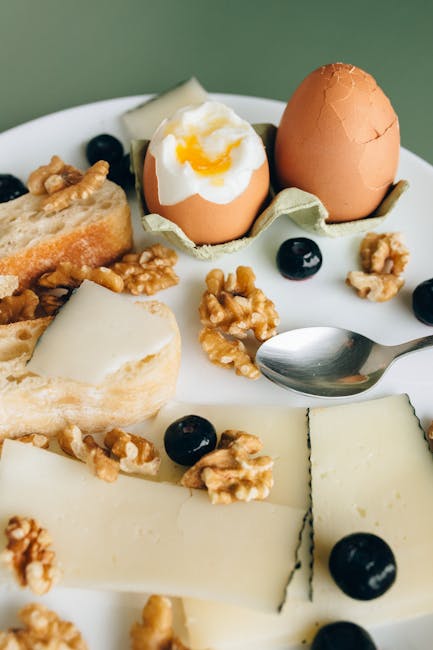How Is Cottage Cheese Made? A Comprehensive Guide from Farm to Fridge
Cottage cheese, a beloved dairy product enjoyed for its tangy flavor and creamy texture, holds a special place in many kitchens. But have you ever wondered about the journey this versatile food takes from farm to your fridge? This comprehensive guide delves into the fascinating process of cottage cheese production, exploring everything from milk selection to the final packaging.
The Starting Point: Milk Selection and Preparation
The foundation of quality cottage cheese lies in the milk. While different producers may utilize various milk sources, the process generally begins with fresh, high-quality cow’s milk. The type of milk—whole, low-fat, or skim—dictates the final fat content of the cottage cheese. The milk undergoes rigorous quality checks to ensure it’s free from contaminants and meets specific standards for fat content and bacterial count.

Once the milk is deemed suitable, it undergoes pasteurization. This crucial step eliminates harmful bacteria, significantly extending the shelf life and improving the safety of the final product. Pasteurization involves heating the milk to a specific temperature for a set time, carefully balancing the need for sterilization with the preservation of desirable flavor compounds and nutrients.
Standardization and Fortification
After pasteurization, the milk may be standardized. This involves adjusting the fat content to meet the specifications of the desired cottage cheese variety. For example, low-fat cottage cheese will require removing some of the fat, while whole milk cottage cheese will maintain its natural fat content. Some manufacturers also fortify the milk with additional nutrients like vitamin D, enhancing its nutritional profile.
The Curdling Process: Turning Milk into Curds
The heart of cottage cheese production is the curdling process. This involves adding a starter culture—a mixture of beneficial bacteria—to the prepared milk. These bacteria produce lactic acid, which gradually lowers the pH of the milk. This acidification causes the milk proteins, primarily casein, to coagulate and separate into solid curds and a watery liquid called whey.
There are different methods for inducing curdling. Traditional methods involve using naturally occurring bacteria, while modern processes often use specific bacterial strains selected for their efficiency and consistent results. The temperature and time required for curdling depend on several factors including the type of starter culture and the desired curd size and texture.
Controlling the Curd Formation
The crucial aspect here is controlling the curd formation. Dairy manufacturers meticulously monitor temperature and time to obtain the desired curd size and firmness. Larger curds tend to result in a coarser, more chunky cottage cheese, while smaller curds contribute to a smoother texture. The expertise of the cheesemakers lies in this precise control, achieving the perfect balance between texture and flavor.
Whey Separation and Washing
Once the curds have formed, the next step is separating the curds from the whey. This is typically achieved through a process involving draining or centrifugation. The whey, a valuable byproduct rich in proteins and nutrients, is often collected and used in other food products or for animal feed. The separated curds are then washed with water to further remove excess whey, affecting the final salt content and overall flavor.
Draining, Salting, and Packaging
Following the washing, the curds are carefully drained to remove as much remaining water as possible. The moisture content is a crucial determinant of the final texture and shelf life. This often involves a period of drainage in specialized equipment. Next, the curds are salted to enhance their flavor and preserve them. The amount of salt added varies depending on the desired level of saltiness and the type of cottage cheese being produced.

Finally, the finished cottage cheese is packaged and promptly cooled to prevent bacterial growth. Modern packaging techniques help maintain freshness and extend shelf life, ensuring consumers receive a high-quality product.
Types of Cottage Cheese
Cottage cheese comes in various forms, distinguished primarily by their fat content:
- Whole milk cottage cheese: Contains the full fat content of the milk.
- Low-fat cottage cheese: Contains reduced fat content.
- Skim milk cottage cheese: Contains minimal or no fat.
Variations also exist in curd size and texture, resulting in creamer or chunkier varieties. Some manufacturers add fruit or herbs to enhance the flavor profile.
From Farm to Table: Quality and Sustainability
The journey of cottage cheese, from carefully selected milk to the final packaged product, highlights the importance of quality control throughout the entire production process. Modern manufacturing processes prioritize safety and efficiency, ensuring consumers receive a consistently delicious and nutritious product. Increasingly, manufacturers are also focusing on sustainable practices, reducing their environmental impact and contributing to responsible dairy production.
The Nutritional Powerhouse
Cottage cheese is a nutritional powerhouse, offering a significant source of protein and calcium, important for building and maintaining strong bones and muscles. It’s also a good source of phosphorus and vitamin B12. The low-fat varieties present a healthier option for individuals seeking to manage their calorie and fat intake.
Conclusion: A Creamy Delight with a Rich History
The production of cottage cheese is a complex yet fascinating process, integrating traditional techniques with modern technology. Understanding this process not only deepens our appreciation for this delicious dairy product but also enhances our awareness of the journey from farm to table and the importance of sustainable dairy practices.


